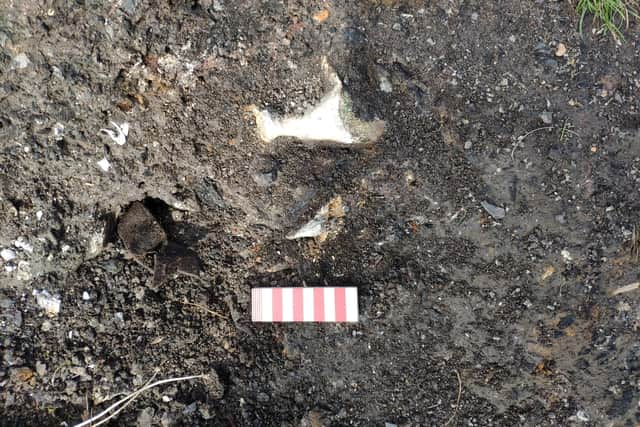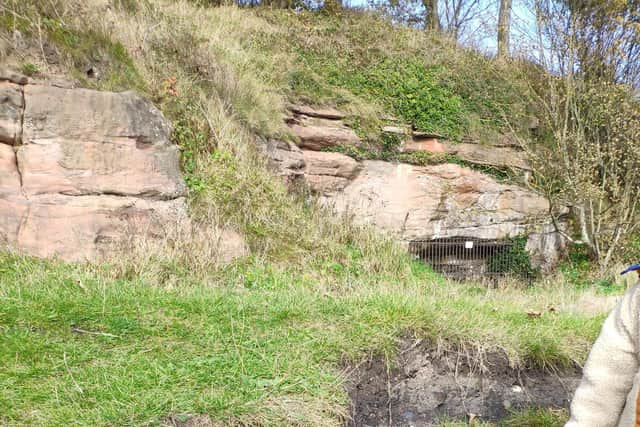Discovery of bones at historic Fife caves
and live on Freeview channel 276
Research was carried out on the remains, which were discovered near the ancient Wemyss Caves site last month.
A spokesman from Save Wemyss Ancient Caves Society (SWACS) said experts were drafted in after local man Gordon Faulkner and his eight-year-old daughter, Tulisa, saw the bones popping out of the ground beside Jonathan’s Cave.
Advertisement
Hide AdAdvertisement
Hide AdThe SWACS spokesman said human skeletons have been recovered in the area in the past so they were keen to have experts take a look.


However, he said the remains are actually that of cattle, and they could be more than 100 years old.
Mike Arrowsmith from SWACS said: “In October, SWACS received a message from Mr Faulkner and his eight-year-old daughter who had spotted some bones on the shoreline outside Jonathan's Cave.
“There have been two human skeletons recovered in the past nearby, so we were very keen to take a look.
Advertisement
Hide AdAdvertisement
Hide Ad

“As it turned out these were cattle bones – one is probably a shoulder blade, or scapula - and were incorporated into the base for the coastal track that used to go to the gasworks. There was also a piece of leather (possibly part of horse tack) which you can see to the left of the scapula.
“There are two probable explanations for the bone: They are from a 19th century midden incorporated into the foundation for the track, or they are earlier, possibly medieval, midden material in the vicinity of Jonathan’s Cave that has become incorporated into the foundation.”
“The last human remains to be found here were of a young adult in their early twenties, probably female, who was buried here some time between AD 1020-1190 and discovered in 1993.”
He added: "There was also a find in 1988, of an adult male buried with his arms folded across the chest which was dated to between AD 970–AD1120.”
Advertisement
Hide AdAdvertisement
Hide AdThe Wemyss Caves contain the largest collection of Pictish inscribed symbols in one place. SWACS aims to secure the caves, carvings and other archaeological findings; manage and ensure safe access to them for members of the public and celebrate their historical significance.